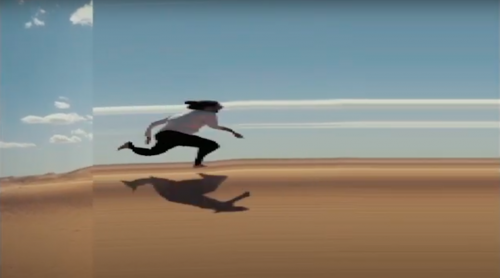Theme
Play and Time
Context
For this week’s project I decided to research one of my all-time favourite artists, Francois Vogal. He is continuously playing with the representation of reality, in an attempt to take it to its most extreme limits, to expand it from within and to turn it upside down. Shape deformation is a constant in Vogel’s practice a careless glance might ascribe it to a great effort of post-production, but, in fact, already in the techniques of shooting, and before precisely in the pinhole photography, his practice is deeply rooted in the body, the gesture, the handcrafted work, which allows him to prepare the scene and build the right tools to capture images. When I dug a little deeper, I read about his techniques and found that I can use slit scan photography to achieve similar results for my work.
The use of slit scan photography is actually quite old. It is often called line-scan, photo finish, or streak photography. Slit scan photography has a rich and colourful history rooted in chemical analogue photography. This technique is often used to visualize high-speed events, such as missiles and bullets, although it is probably best known as photo finish photography that is used to determine the outcome of races. In the past, slit scan photographic systems used a sheet of film that was moved past a slit. These cameras were most commonly used as photo finish cameras at races and, for example, could very precisely measure the time one horse might have won the race by.Modern times have replaced film with digital sensors, slit scan imaging is still used to solve a number of problems found in industrial applications.
Method
To use slit-scanning and time displacement in After Effects to experiment with representation of time.
Response
For this work I used a royalty free footage from YouTube and started experimenting with it. I watched different tutorials on YouTube to understand the process. To create a slit scan image, one row of pixels is extracted from each frame of the video and placed adjacent to the same row from the next frame. Each row of pixels represents a duration of time. If the video was recorded at a rate of 60 frames a second, then the row of pixels will represent 1/60th of a second. The resulting image is really a representation of motion and time. I played with different ways to represent time for this response, and I think using slit scanning and time displacement helped me achieve a distinctive representation of time.
Reflection
Admittedly, slit scanning is not the most popular form of capturing photos or videos, but the resulting images are often a surprise to the creator and can be quite stunning and beautiful in their own right. I would have gotten a better result if I shot the video myself with the Mise-en-Scene that I like but I wanted to spend more time on editing the footage rather shooting the video.
In this exercise I experimented with the idea of disruption which can be considered a component of play. Continuing on having different categories of pleasure in play, I also wanted to have the Creation pleasure principle in the work. “Creation is the pleasure participants get from having the power to create something while interacting with a work. It is also the pleasure participants get from being able to express themselves creatively. For example, he or she might feel pleasure at being able to shape and manipulate a visual element of a work. This pleasure could come from the aesthetic qualities of the visual creation that he or she makes. “To reflect upon my own experience making this response I can confirm that my expectations about the possible pleasures in this work was not met. The process was interesting; however, the problem was that the pleasure framework was not considered properly when planning the production, hence the work did have some aspect of disruption (visually disrupting the movement) but was not an effective tool for the conceptual development of an experience and simply did not fulfil the expectation and the criteria that I had in mind.
References
https://www.youtube.com/watch?v=a7V24QcZUy4
https://www.youtube.com/watch?v=-crzMGEj36o
https://petapixel.com/2016/03/14/shoot-rollout-slit-scan-photos-ordinary-dslr/
http://www.reveriecontent.com/directors/francois-vogel
https://makezine.com/2017/10/26/emulate-slit-scan-photography-for-beautifully-weird-images/
Costello, Brigid, and Ernest Edmonds. “A Study in Play, Pleasure and Interaction Design.” Proceedings of the 2007 Conference on Designing Pleasurable Products and Interfaces. ACM, 2007. 76–91. Web.
About This Work
By Bycharlotte
Email Bycharlotte
Published On: 24/03/2021
